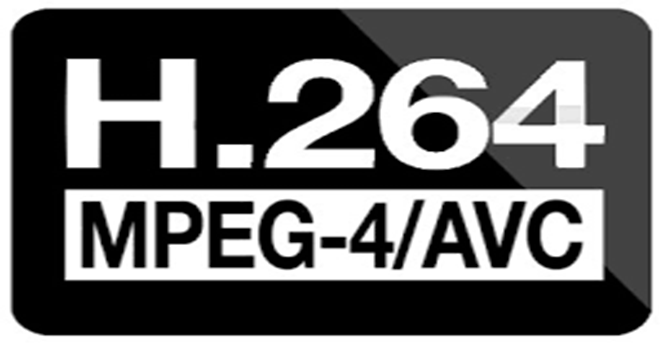Image source: norpix.com
H.264 also known as MPEG-4 AVC is a video compression codec that allows content to be delivered over the web. It uses more advanced technology to analyze both the foreground parts and background or static parts of the video to avoid any redundant information. Let’s look at the pros and cons of the AVG codec.
Pros:
1. Efficient: It’s 2 times more efficient and file size which 3X times smaller than the MPEG-2 Codecs making this compression format more efficient. This video compression codec results in low transmission bandwidth for video content.
2. Compression rate: H.264 has the best compression rate compared to JPEG and MJPEG4 formats.
3. Suitable for slow-motion video content: H.264 is extremely efficient for low-motion Video codec using megapixel cameras.
4. Incredible video quality: H.264 delivers clear high-quality video content at a data rate of ¼ which is half the size of the previous video format.
5. Large integration: It is easy to integrate H.264 to a wide range of picture formats thus making it the most used data compression/decompression format for a large number of applications.
6. Picture quality: It has a better picture quality than the MPEG-2, MPEG-4, and H.263+ formats. Content compression is at a low bit rate.
7. Real-time video transmission: MPEG-4 AVC delivers high-quality video encoding and decoding of various data formats in real-time. It also provides real-time image compression in various devices.
8. Saves on storage: H.264 reduces the size of digital video file content by 50% saving on storage space required to store heavy digital video files.
9. Internet streaming: This video format can allow high-resolution or high-definition cameras to stream images directly over the internet.
10. Reduced bandwidth: AVC codec reduces the amount of bandwidth required to send videos files over the network due to its smaller compressed files. This results in a huge saving of the available bandwidth.
Cons:
1. Compatibility Issues: H.264 has a sophisticated and complicated video format making it hard for other vendors to understand the H.264 standard. The standard uses backward compatibility thus it is only compatible with older compression technologies (older video standard formats like H.263 or H.261).
2. Inconsistent image quality: The compression can result in inconsistent image quality which can be as good as JPEG image quality or sometimes produce low-quality image format.
3. Hardware overhead: It requires more hardware overhead as compared to other video compression codec. The hardware processing capacity is directly proportional to the quality of the video compressed.
4. Computing complexity: High CPU time is required to compress data in H.264 formats. A high-end computer is needed to compress multiple live videos.
5. Licensing agreements: Due to its complex nature, H.264 video codec has complicated licensing agreements and requires some loyalty fee to encode video legally.
6. Error resiliency: For maximum compression, another layer is added to deal with bit errors and if you don’t pay for error resilience, AVG video will result in a low compression rate.
7. Artifacts: The compressed images features appear to grow, disappear, and then grow repeatedly lacking some consistency. This growing and disappearing make it difficult for motion detection and object tracking.
8. Processing power: More processing power is required since a long encoding time is required and the devices used should have a high-power processor.
9. Cost: All devices licensed with H.264 standard involve some additional cost which is passed to consumers increasing the initial price of the devices.
10. Latency: H.264 AVC codec introduces high latency on the devices used. This depends on the hardware processor used.



